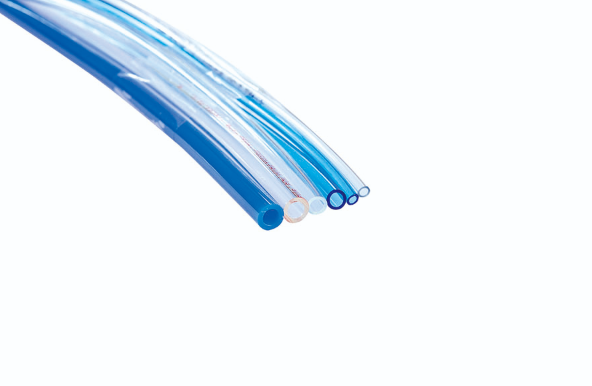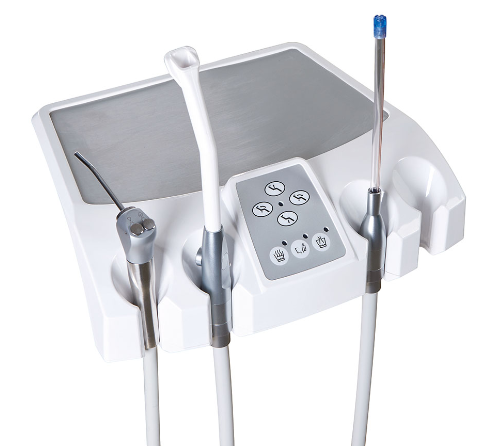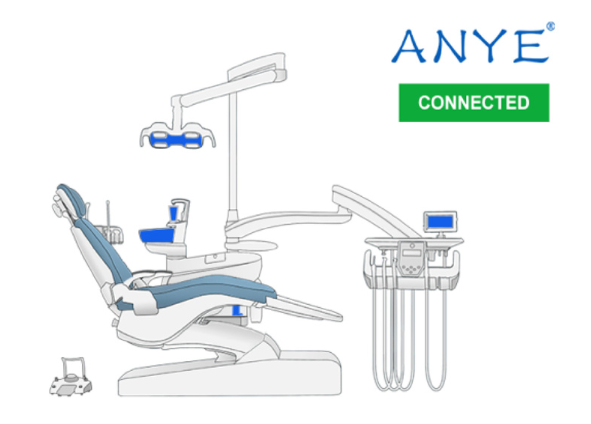Choosing the Right Dental Chair Tubing Material
When it comes to outfitting a dental practice, every detail matters—right down to the tubing material used in dental chairs. Often overlooked, the material of the tubing plays a crucial role in patient comfort, practitioner efficiency, and maintaining stringent infection control standards.
In the realm of dentistry, where precision and patient well-being reign supreme, the choice of tubing material is more than a matter of convenience; it's a critical decision that impacts the daily workflow and overall experience within the practice. Thus, in this post, the author would guide you to choose the right dental unit tubing.
In the realm of dentistry, where precision and patient well-being reign supreme, the choice of tubing material is more than a matter of convenience; it's a critical decision that impacts the daily workflow and overall experience within the practice. Thus, in this post, the author would guide you to choose the right dental unit tubing.
Understanding Dental Chair Tubing
Dental chair tubing serves as the circulatory system of a dental practice, facilitating the passage of air, water, and various instruments crucial for procedures. It's not merely a conduit; it's an essential component that directly influences the practitioner's ability to perform tasks seamlessly while ensuring patient comfort and safety.
Functionality is paramount in this context. Flexibility, durability, and compatibility with various tools and chemicals are non-negotiable attributes for these materials. Furthermore, in the ever-evolving landscape of healthcare, tubing materials play a pivotal role in meeting stringent infection control measures, safeguarding both patients and practitioners.
Functionality is paramount in this context. Flexibility, durability, and compatibility with various tools and chemicals are non-negotiable attributes for these materials. Furthermore, in the ever-evolving landscape of healthcare, tubing materials play a pivotal role in meeting stringent infection control measures, safeguarding both patients and practitioners.
Common Types of Dental Chair Tubing Materials
In this section, the author would list the common types of the dental chair tubing materials and illustrate their features.
●PVC Tubing
PVC (polyvinyl chloride) tubing stands as a prevalent choice due to its flexibility and cost-effectiveness. However, it's imperative to acknowledge its limitations. While durable and resistant to damage, concerns persist regarding the use of plasticizers and the potential release of chemicals, raising valid considerations about its suitability in dental settings.
●Silicone Tubing
Silicone tubing emerges as a contender with its flexibility and superior biocompatibility. Its resistance to high temperatures and diverse chemical compositions makes it an attractive option. Yet, there are discussions surrounding its durability and cost-effectiveness that dental practitioners must weigh.
●Polyurethane Tubing
With its notable chemical resistance and durability, polyurethane tubing presents an intriguing choice. However, concerns regarding stiffness and cost warrant careful consideration before adoption in dental settings.
●Hybrid Tubing Materials
The evolution of hybrid materials combines the best features of different types, offering a promising solution to address specific dental chair requirements. These hybrid materials bridge gaps, merging durability, flexibility, and compatibility, presenting exciting options for dental practitioners.
Factors to Consider When Choosing Tubing Material
Making an informed decision about dental chair tubing material involves a multi-faceted evaluation:
Practice Needs and Use Cases
Consider the nature of procedures regularly performed. For instance, if your practice focuses on complex dental surgeries or requires frequent movement and flexibility during treatments, flexible tubing might be a priority.
Additionally, understanding patient comfort preferences, such as minimizing noise or ensuring a smooth surface that doesn't cause irritation, is vital. Practitioner preferences, like ergonomic design or specific handling requirements, should also be factored in.
Additionally, understanding patient comfort preferences, such as minimizing noise or ensuring a smooth surface that doesn't cause irritation, is vital. Practitioner preferences, like ergonomic design or specific handling requirements, should also be factored in.
Infection Control and Safety Standards
Dental practices are stringent about infection control. Tubing materials should be resistant to microbial growth, easy to clean, and disinfect without compromising their structural integrity. Material choice should align with regulatory guidelines to ensure patient and staff safety. Materials with smooth surfaces that resist buildup of debris and bacteria might be advantageous.
Durability and Longevity
Evaluate the expected lifespan of tubing materials based on their resilience to wear and tear. Consider factors like resistance to abrasion, cracking, or degradation due to chemical exposure from cleaning agents or dental materials. Longevity can affect maintenance costs and downtime for replacements.
Flexibility and Handling
The tubing's flexibility directly impacts maneuverability and ease of use during treatments. Flexible tubing allows for easier manipulation around corners and tight spaces within the oral cavity. It also reduces strain on the practitioner's wrists and hands during procedures, contributing to overall comfort and efficiency.
Cost Considerations
While aiming for quality, it's important to balance the initial investment with long-term benefits. Cheaper materials might seem cost-effective initially but could result in higher maintenance or replacement costs over time. Assessing the total cost of ownership, including maintenance, repairs, and lifespan, helps in making a financially prudent decision.
Compatibility with Equipment and Accessories
Compatibility with existing dental equipment and accessories is crucial. Ensure that the chosen tubing material is compatible with connectors, valves, and other components used in the practice. Incompatibility can lead to inefficiencies or the need for additional purchases or modifications.
Patient Experience and Perception
Consider how the tubing material might impact the patient experience. Materials that minimize noise, offer a clean appearance, and contribute to a comfortable environment can enhance patient satisfaction and perception of the practice.
Conclusion
Selecting the right dental chair tubing material is an intricate decision that requires careful evaluation of various factors. The perfect balance between functionality, safety, durability, and cost is paramount. As the dental landscape evolves, practitioners must prioritize patient comfort, safety, and efficiency in their choice of tubing material to deliver optimal care.




Leave a comment